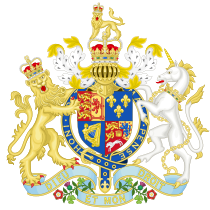The Act against Seditious Words and Rumours (23 Eliz. Cap. II), also known as the Statute of Silence, was passed by the parliament of Queen Elizabeth I in January 1581. It introduced a series of increasingly gruesome punishments for speaking or publishing anything that the Queen did not wish to hear, ranging from the loss of an ear to capital punishment. An amendment to the the Act did however specify that all offences had to be committed maliciously to be subject to the law.[1]
By the time of the Act there was an increasing fear of witchcraft and the occult in general. That concern was reflected in making it a capital offence to use astrology or divination to predict the Queen’s death, or to predict her successor,[2][3] but astrology in general was not criminalised.[4]
Rather unusually the punishments set out for being found guilty of some of the new felonies defined by this legislation varied according to where the offence took place. For instance, if seditious rumours were spread in a market place or shire city, the offender would be punished by being being pilloried
Device used to publicly humiliate those found guilty of minor offences.. But in a “Cittie or Town Corporate” the same offence was to be punished by cutting off both of the offender’s ears. The penalty for reoffending in both cases was death.[3]

